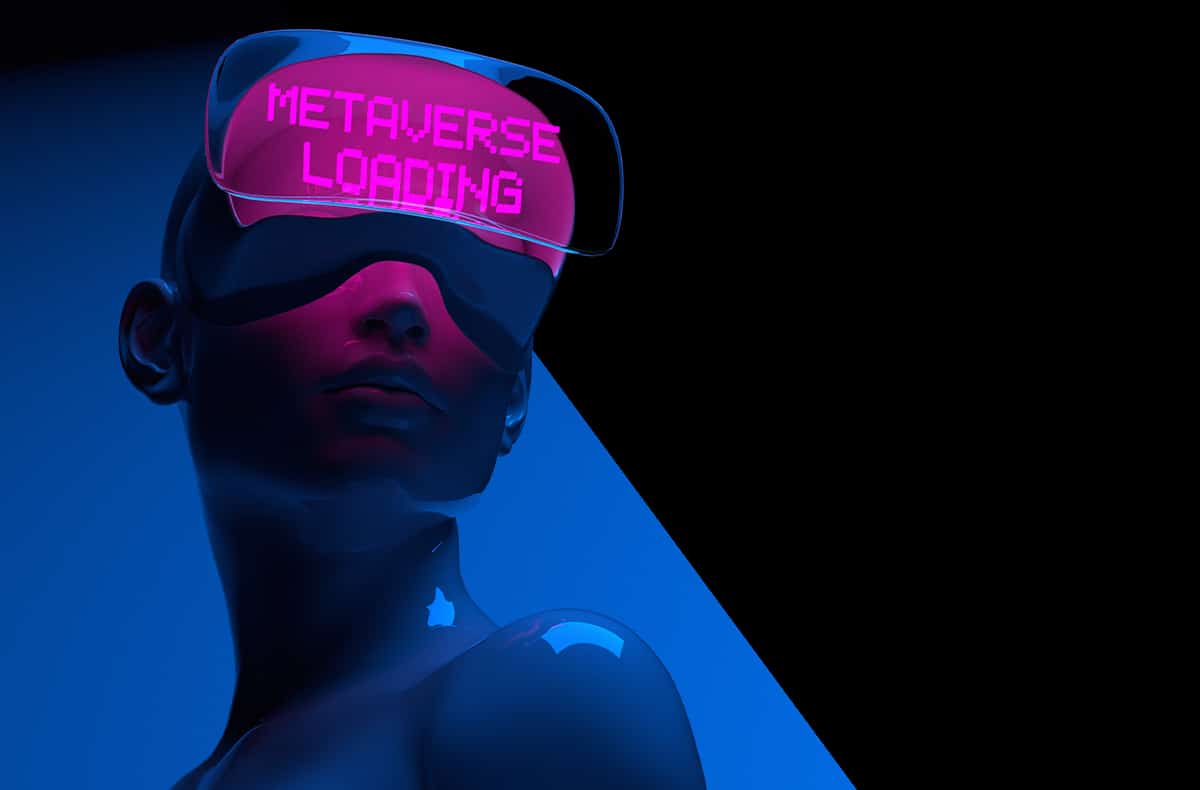
So, before we start about how, where and when the metaverse can take us, we first want to understand what the metaverse actually is. Right now, the internet is served predominantly on flat screens. However, it is moving to be more fully immersive with Mixed Reality (MR) and Virtual Reality (VR) set to increasingly dominate the landscape of digital in the near to longer-term future.
What will the metaverse be? We IT executives see it, simply, as seamlessly connected immersive experiences. We believe that current digital experiences will go the way of the VHS tape. Everything in the future will run on either new MR hardware that replaces smartphones (e.g., glasses with transparent screens) or VR headsets for games, social, entertainment and tools.
As for interactions, look at where we are currently. In essence, we use fake hands to click on buttons that say the words “I like this” with a picture of a thumbs up. Initially, you might think the next version of this might be pressing a big fat button in an immersive space to perform that same action, however, the reality looks a lot different. Gestures in 3D worlds change interaction design entirely. And, as a result, all experience models or paradigms will need to change too. This said, some of this technology doesn’t exist yet and some is even unproven, so there’s a lot that is unknown or to be determined. The exciting news is that the future of the metaverse and user experiences within it are ours to shape. And there are many things we can do today to prepare for this massive change that’s coming.
The days of disconnected conversations and experiences will soon be over. Broadly speaking, the technologies that make up the metaverse can include VR—characterised by persistent virtual worlds that continue to exist even when you’re not playing—as well as AR or augmented reality, which combines aspects of the digital and physical worlds. This integrated network of 3D virtual worlds, is, in a simple summary, the metaverse.
However, the metaverse doesn’t require that those spaces be exclusively accessed via VR or AR. A virtual world, like aspects of Fortnite that can be accessed through PCs, game consoles, and even phones, could be metaversal, containing immersive components but being accessible through more traditional existent technologies as well. Games have for a long time had digital content and second currencies. The concept of blockchain isn’t required to be part of the metaverse conversation until somebody makes it logically connected from a software perspective. A big topic of conversation at Consensus 2022 was interoperability between experiences and platforms. For example, the often-referenced example of taking digital clothing between experiences still requires those games and experiences to support the digital clothing in the first place. It’s just like developing anything else: if someone decides to support email signup, Facebook SSO, or Google’s SSO, it’s totally up to the developer. So, the idea that one standard will exist across everything is fictional. Everyone will end up doing their own thing and saying it’s the standard.
What does this really mean? I believe we should wait and see how best to spend our creativity on “stuff” within the metaverse that will be useful and break boundaries. Let’s take a look at a few different fields:
Art and Design: experiences like SculptVR and Adobe Medium allow designers to design, sculpt, build, and prototype in virtual reality environments. This is vital for some industries like architecture, video game design, and 3D printing.
Advertising: the metaverse as an idea is likely to be a powerful tool for advertisers, when combined with data held on customers to show personalised adverts in physical spaces. Same as e-commerce, this new channel has the potential to improve the current e-commerce practices and transform how the purchase can be done online, moving from “click and buy” to “experience and buy” practices, enabling customers to experience a product virtually before making the purchase decision.
Socialising: connecting socially in the metaverse makes the most sense: it’s with this function in mind that the metaverse has been or is being built. From companies like Meta, whose foundation is built on the social network of Facebook, VR experiences are largely social in nature, from playing golf, fishing, watching films, or just hanging out together in a physical space. The metaverse shrinks the distance between friends so that no matter where they are in the world, you can feel as though you are physically present with them, partaking in an immersive experience together.
What is the market opportunity? The metaverse’s market opportunity is growing rapidly. On Christmas Day 2021, the Oculus app, which serves as the app for the world’s top VR headset from Meta—was ranked number 1 in the App Charts on Apple and Android, above notable apps like TikTok, YouTube and Instagram. On a day when lots of people receive new phones, the Quest 2—Oculus’ top-selling headset—had more activity than these popular social networks.
The metaverse has the potential to unlock incredible opportunities for clients in sales, brand performance, and ROI. Sure, it’s maybe not feasible just yet. Headsets are still expensive for the average consumer, but as with anything as technology evolves and more players enter the market, competition drives prices down.
We are truly at a point where MR and VR—although the former, I believe, will take longer to fully emerge—represent a credible, viable and growing commercial opportunity for new content. It will be thrilling to see what we discover in this new frontier.
